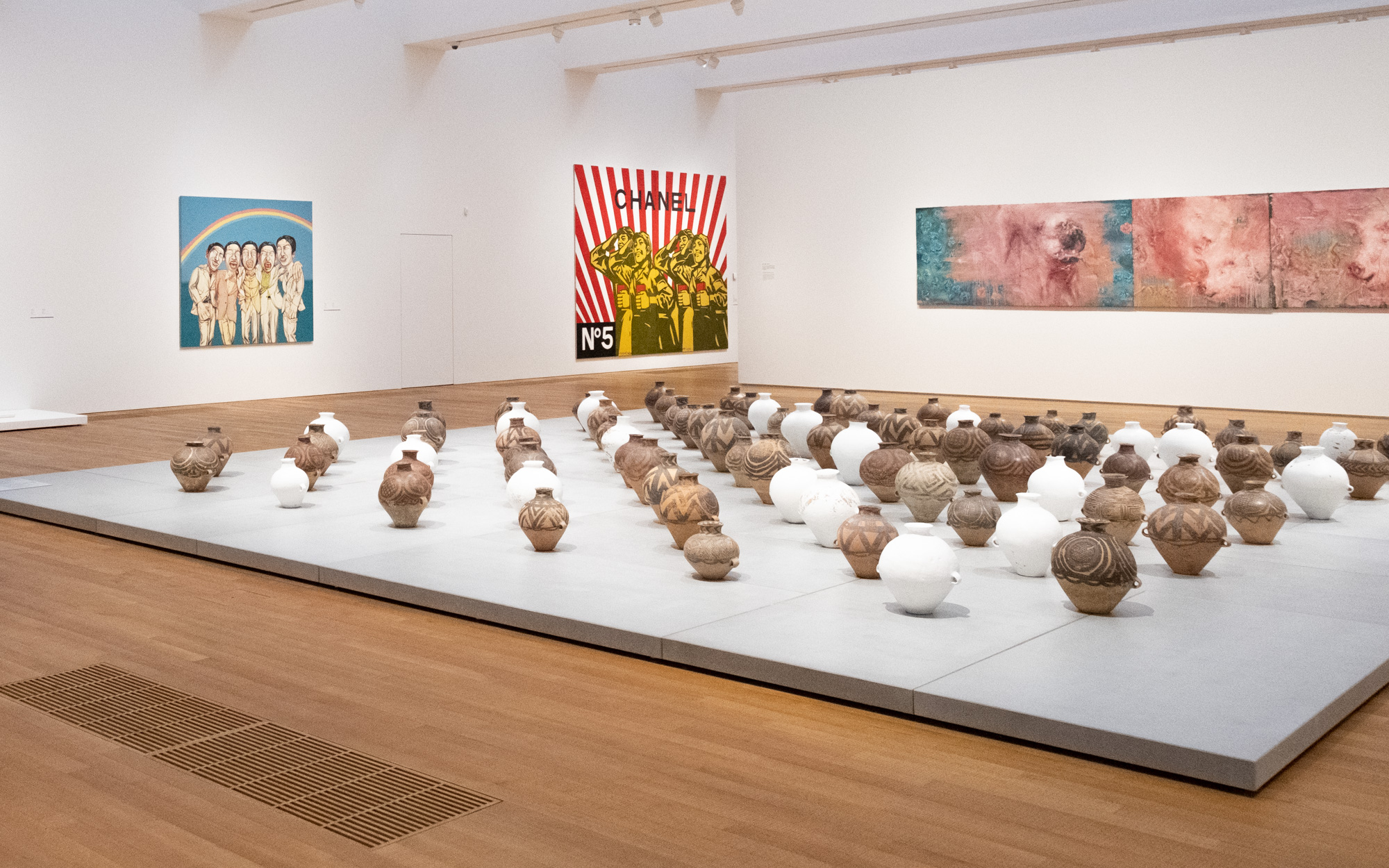News
Sigg Collection Takes Center Stage at M+ Opening


Long anticipated and much debated, M+, the first international museum of modern and contemporary art and visual culture from Asia, opened to the public on November 12 in Hong Kong’s West Kowloon Cultural District after more than a decade in development. The 65,000-square meter building, designed for the harbor-facing site by the Swiss architecture firm Herzog & de Meuron in partnership with TFP Farrells and Arup, is home to a collection of 8,000-plus items, of which more than 1,500 went on view in the opening exhibitions, which spanned modern and contemporary art, architecture, and design from countries across Asia.
The museum’s centerpiece is the Sigg Collection, which offers visitors an extensive tour through Chinese art history of the postwar era. The opening exhibition “From Revolution to Globalisation” spans Chinese art from Socialist Realist propaganda of the early 1970s to the works of the independent Stars group in the post-Cultural Revolution years, before Chinese artists began to flourish in vanguard communities on the mainland, as well as in countries around the world, including France, Japan, and the United States. With the display of the Sigg Collection, M+ has positioned itself as the defining destination for audiences, including artists and scholars, interested in exploring the history of Chinese art. A former Swiss ambassador in Beijing, Uli Sigg told ArtAsiaPacific at the museum's opening on November 11 that he was feeling “somewhere between exhaustion and exuberance, but closer to exuberance today” after watching the audience's reactions following the “long march” to the collection’s public presentation.
While the Sigg Collection’s debut is a landmark occasion, its benefactor and host institution still face uncertainty about the fate of certain artworks. The latest controversies were kicked up earlier in 2021 by local politicians decrying certain pieces in the Sigg Collection, in particular one photograph from a larger series by an outspoken critic of Beijing’s policies, the artist, filmmaker, and activist Ai Weiwei. The controversial images from Study of Perspective (1995–2017)—which feature Ai raising a middle finger to iconic seats of power in numerous cities around the world, including Beijing—were removed from the museum’s website and are not on view in the opening exhibition. However Ai’s installation Whitewash (1995–2000), of 126 Neolithic-era jars, some dipped in white paint, occupies a central place in one of the largest galleries. In addition, numerous artworks addressed topics that would likely be barred from museums in mainland China, including ambiguous or satirical depictions of Mao Zedong; overt references to the massacre of student protesters calling for democracy in Tiananmen Square on June 4, 1989; and displays of nudity in sometimes extreme acts of performance art.
Since China’s central government forced the passage of the National Security Law (NSL) for Hong Kong in 2020, local art and cultural communities have felt both increased scrutiny and anxiety about what might be deemed in violation of the ambiguously worded NSL. The head of the West Kowloon Cultural District, Henry Tang, formerly Hong Kong’s Chief Secretary in 2007–11, who had previously invited national security police to inspect M+’s collection, fielded questions at the opening press conference from reporters, saying that the museum would “uphold and encourage freedom of artistic expression and creativity” while also emphasizing that all exhibitions would comply with the new censorious regime of the NSL and asserting that “the opening of M+ does not mean artistic expression is above the law.” Tang also misrepresented the current cultural conversations about racial justice happening at major museums around the world by conflating those discourses with political censorship, saying: “I have no doubt that [the Museum of Modern Art in New York] probably has artworks in their archives that may not be displayed today because it would not be politically acceptable in today’s environment . . . for example, whether it is racially incorrect, or it is an oppression of some sort of a colored race. So there are evolutions . . . Every society [does] have certain evolutionary values, but artistic freedom of expression is never in question. But as a public museum, we have a responsibility to ensure that it complies with all the laws and that we will respect our society’s cultural standards, whether it is color, creed, race or religion.”
With bureaucratic and political pressures weighing heavily on the museum’s opening, M+'s team has nevertheless finally completed the museum's opening phase, with a building that was able to pass public-safety ordinances and with artworks that conform to the still-evolving discourse around so-called national security. M+ expects to welcome more than one million visitors in its first year, with free admission to the collection exhibitions as the museum’s programs, film screenings, and public events roll out in the months ahead.
HG Masters is ArtAsiaPacific’s deputy editor and deputy publisher.







